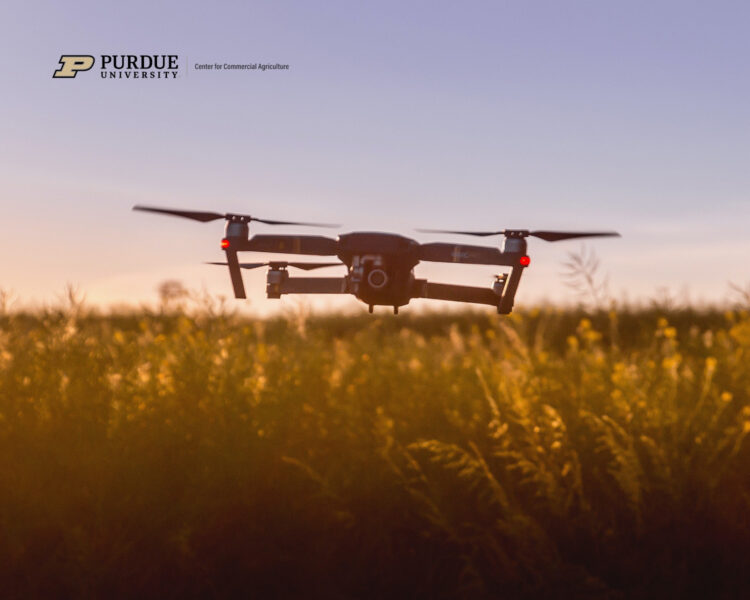April 9, 2021
Automation and Robotics in Production Agriculture
by: Michael Langemeier and Michael Boehlje
Recent articles have discussed the importance of new technologies to crop agriculture (March 5, 2021), the value and role of information in the adoption of technologies (March 12, 2021 and March 18, 2021), and possible payoffs for precision farming (March 26, 2021 and April 2, 2021). This article explores trends in automation and robotics in the general economy, and provides examples of the use of these technologies in production agriculture.
Trends in Automation and Robotics
Before discussing the expected adoption of automation and robotics in production agriculture, we will
discuss trends in automation technologies that are important to most, if not all, industries. Willcocks
(2020) discusses the importance of three primary automation technology types: physical robots, robotic
process automation, and cognitive automation. Physical robots will perform industrial tasks that were
previously more labor intensive. Robotic process automation uses software to automate tasks that were
previously performed by humans. Cognitive automation uses sophisticated software to automate tasks or
improve task precision. Machine learning, visual processing of data, and the use of large data sets to
improve decisions are components of cognitive automation.
Turning to the adoption of these technologies, Chui et al. (2016) note that automation will not necessarily eliminate entire occupations. However, automation is likely to affect portions of almost all jobs. The authors identify three groups of occupational activities: 1) those that are highly susceptible to automation, 2) less susceptible to automation, and 3) least susceptible to automation. Least susceptible tasks include personnel management and decision-making, planning, and creative tasks. Less susceptible tasks include stakeholder interactions and unpredictable physical work. Examples of unpredictable physical work provided by the authors included construction, forestry, and raising animals. Highly susceptible tasks include data processing and predictable physical work. Examples of predictable physical work provided by the authors included welding and soldering on an assembly line, food preparation, and packaging.
It is important to note that a portion of most industries have data processing and predictable physical work activities that are susceptible to automation. Chui et al. (2016) estimated that approximately 20 percent of the time spent in U.S. workplaces involved performing physical activities or operating machinery in a predictable environment. The authors listed the service sector, manufacturing, and the retail sector as the most susceptible to automation. Activities and sectors classified in the middle range for automation included financial services and insurance, construction, and agriculture. As the authors noted, unpredictable physical work conducted in unpredictable environments, which is prevalent in agriculture and construction, make it more challenging, but not impossible, to automate tasks.
The most difficult activities to automate are those that involve managing and supervising people, and
activities that apply expertise to decision-making, planning, and creative work. Computers do a good job
with well-defined tasks. However, as noted by both Chui et al. (2016) and Willcocks (2020), it is difficult to codify and improve machine learning techniques to mimic human skills and capabilities such as leadership, creativity, intuition, judgement, tacit knowing, social interaction, peer judgement, motivation, and many other tasks. In particular, tacit knowing or the fact that humans know more than they can describe is problematic to automation (Polanyi, 2009). Obviously, tacit knowledge makes it difficult to write code for machine learning.
Examples from Production Agriculture
Rather than provide a comprehensive list of automation technologies that are either being developed or
that are already being used, we will briefly describe some noteworthy examples. Autonomous grain carts
and tractors have garnered considerable press. Autonomous grain carts enable an individual in the
combine to locate the cart, tell the cart to follow and match the speed of the combine, and unload on the
go. Autonomous tractors use GPS and other wireless technologies to farm land without requiring a
driver. These tractors are programmed to observe their position, determine speed, and avoid obstacles.
Another technology with a lot of promise in production agriculture, particularly for sensing and monitoring, is drones. Erickson and Lowenberg-DeBoer (2020) indicate that the adoption rate by retailers of drones reached 42% in 2020. Moreover, 46% of the retailers indicated that they currently offer drone imagery. This percentage is expected to increase 19% in the next three years. Drones are used for crop or livestock monitoring; to plan and make land improvements; to make seed, fertilizer, and pesticide prescriptions; to help with replanting decisions; and to make grazing decisions. As technology continues to improve, farms will able to use drones to enhance crop and animal health, and to enhance the ability to assess the impact of seed, fertilizer, and pesticide applications. Also, drones will enhance a farm’s ability to assess the impact of adopting specific practices such as reduced tillage, the use of cover crops, or rotational grazing.
The Hands Free Hectare project associated with Harper Adams University in the UK uses automated
machines to grow crops remotely without drivers or agronomists in the field. The project utilizes
autonomous navigation systems to plant, grow, and harvest an annual cereal crop. Individuals are not
allowed to step on the field so drones are used to take soil and crop samples, and to monitor the growing
crop. Cost analysis on robotics by Lowenberg-DeBoer et al. (2019) based on data from this project
suggests that automation has the potential of reducing the costs for smaller acreage farms more than
larger acreage farms, thus reducing, but not entirely eliminating, economies of size in crop farming.
3-D printing could also contribute significantly to production agriculture. 3-D printers will allow machinery dealers and producers to manufacture spare parts on-site. This technology will likely change how we think about manufacturing batch size and inventories, and will allow parts to be produced on site and justin-time, which could substantially reduce machine downtime. During peak work-loads (e.g., planting and harvesting seasons), this reduction in downtime would be extremely valuable.
A good example of the use of automation in the livestock industry is the spread of robotic milkers. This
technology has been adopted for a number of reasons including labor cost savings, lack of availability of
labor to milk cows, and to improve milk production per cow. Robotic milkers adapt milking frequency to
individual cows and by lactation stage. Also, just as precision agriculture adoption for crops results in
more timely data collection and improved decision making, a robotic milking system creates a wealth of
data that can be used to make decisions (e.g., optimal dairy cow replacement). Use of cameras and heat
sensors to monitor movements and temperatures to detect lameness and animal behavior, including feed consumption and waste, and possibly diseases and health issues, are other examples.
Concluding Comments
This article discussed trends in automation and robotics in the general economy, and provided examples
of using these technologies in production agriculture. Possible benefits of the adoption of automation and robotics will include reductions in costs, improvements in productivity, increases in the production of value-added products, reduced downtime and improved capacity utilization, and reductions in operating risk. Due to synergies associated with the adoption of multiple technologies, the economic evaluation of automation and robotics will require a whole-farm system approach rather than employing a partial budgeting approach, which just examines the adoption of one specific technology at a time. Many of the technologies that are currently being developed for other industries can or will be readily adopted in production agriculture. As technology continues to develop, robotics and machine learning will at least partially replace physical activities. However, it is important to note that additional expertise and skills will be needed to implement these new technologies. An upcoming article will describe the gap in skills related to the further adoption of automation and robotics, as well as other precision agriculture
technologies, in production agriculture.
________________________________________________________
References
Boehlje, M. and M. Langemeier. “Potential Payoffs of Precision Farming.” Center for Commercial Agriculture, Purdue University, April 2, 2021.
Boehlje, M. and M. Langemeier. “Adoption of Precision Agriculture Technologies.” Center for Commercial Agriculture, Purdue University, March 26, 2021.
Boehlje, M. and M. Langemeier. “The Role of Information in Today’s Uncertain Business Climate.”
Center for Commercial Agriculture, Purdue University, March 18, 2021.
Boehlje, M. and M. Langemeier. “Information Technology and Value Creation.” Center for Commercial Agriculture, Purdue University, March 12, 2021.
Boehlje, M. and M. Langemeier. “Importance of New Technologies for Crop Farming.” Center for Commercial Agriculture, Purdue University, March 5, 2021.
Chui, M., J. Manyika, and M. Miremadi. “Where Machines Could Replace Humans.” McKinsey Quarterly, July 2016.
Erickson, B. and J. Lowenberg-DeBoer. “2020 Precision Agriculture Dealership Survey.” Departments of
Agricultural Economics and Agronomy, Purdue University, August 2020.
Lowenberg-DeBoer, J., K. Behrendt, R. Godwin, and K. Franklin. “The Impact of Swarm Robotics on
Arable Farm Size and Structure in the UK.” Paper presented at the Annual Conference of Agricultural
Economic Sciences, University of Warwick, April 15-17, 2019.
Polanyi, M. The Tacit Dimension. Chicago: University of Chicago Press, 2009.
Willcocks, L. “Robo-Apocalypse Cancelled?” Journal of Information Technology. 35(Issue 4, 2020):286-
302.
TEAM LINKS:
PART OF A SERIES:
RELATED RESOURCES
UPCOMING EVENTS
We are taking a short break, but please plan to join us at one of our future programs that is a little farther in the future.






